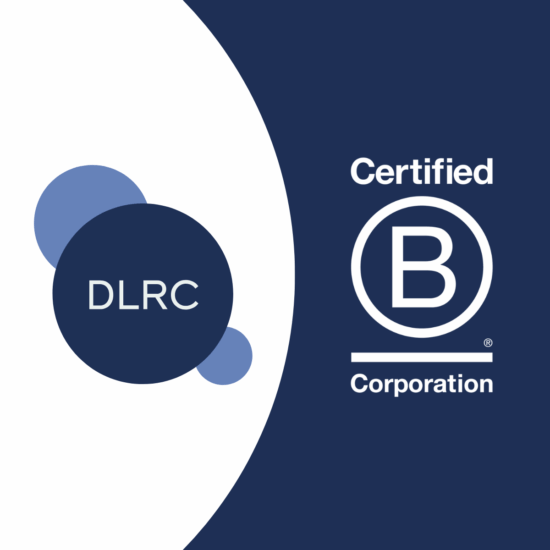Press Release: DLRC Group Becomes a Certified B Corporation
Published Dec 02, 2025
Published 14th November 2025

Since becoming fully applicable in May 2022, the In Vitro Diagnostic Medical Devices Regulation (IVDR; Regulation (EU) 2017/746) has reshaped the EU regulatory landscape governing the safety, performance, and market access of in vitro diagnostic medical devices (IVDs).
This article focuses on a key aspect of IVDR: the legal framework and requirements for performance studies in the EU. These provisions aim to protect the rights, health and safety of participants and ensure scientific robustness and reliability of data generated on IVDs.
Under Article 2(42) of IVDR, a performance study is defined as a study undertaken to establish or confirm the analytical or clinical performance of an IVD. These studies must be designed with clear endpoint(s) which establish or confirm the device’s performance characteristics. It’s important to note that IVDR does not regulate clinical or laboratory methods, e.g., describing workflows or operating procedures of a device in the laboratory, but rather focuses on the generation of performance data specific for a device.
When and if clinical performance studies (CPS) are required, to assess clinical performance (i.e., whether the IVD can yield results which are clinically relevant for the intended use and population), this would be subject to stringent IVDR requirements and demand a structured, well-documented approach. In some cases, the CPS will be part of a combined study, meaning a clinical trial of a medicinal product together with a performance study of an IVD.
Conducting a CPS under IVDR is a multi-layered process that demands careful planning, regulatory expertise, and cross-functional collaboration. Whether you’re preparing for a pre-market or post-market study, understanding the evolving regulatory landscape is essential to avoid delays and ensure compliance.
In this article, we’ll explore the key regulatory considerations for conducting a CPS under IVDR, highlight common challenges sponsors face, and share how DLRC can support you in navigating this complex landscape with confidence.
Under the IVDR, certain performance studies fall within Article 58(1), Article 58(2), or Article 70, and you must either submit them for authorisation or notify the relevant Competent Authority. These include:
In addition to regulatory submission, all performance studies must undergo ethical review by an Ethics Committee (EC) in accordance with national law. This ethical review is a mandatory parallel process to the regulatory submission and must be factored into study timelines and planning.
Sponsors are responsible for determining whether their study falls within the scope of these articles. This involves reviewing the regulatory definitions and consulting with relevant stakeholders, including the device manufacturer and regulatory experts. DLRC can assist in this early-stage evaluation, helping sponsors interpret the regulation, avoiding unnecessary submissions and/or delays and ensuring compliance from the outset.
If a study is subject to IVDR, the sponsor is responsible for the initiation, management and financing of the study. This includes:
For sponsors not established in the EU, IVDR requires the appointment of an EU legal representative to act on their behalf. This representative is responsible for ensuring the sponsor’s compliance with IVDR and serves as the primary contact for all regulatory communications – a responsibility DLRC is able to support.
Firstly, the IVDR application package must be prepared according to the IVDR requirements outlined in Annex XIII and Annex XIV.
Two cornerstone documents required for any CPS submission include:
While these two documents are essential, it’s important to note that a broader set of documentation is required under Annexes XIII and XIV. Preparing these documents can be time-consuming, and according to an EFPIA survey, it is widely acknowledged that the IVDR documentation expectations are burdensome.
DLRC’s experience in drafting and reviewing these documents can streamline the process, ensuring alignment with IVDR requirements, in turn reducing the burden on sponsors.
Cross-functional teams and the IVD manufacturer must provide input and collaborate closely during preparations, especially when a third party manufactures the IVD. In these cases, the sponsor must work closely with the manufacturer to develop essential documentation and ensure alignment on study objectives and device specifications. This relationship is critical to ensure the study is scientifically sound and submission-ready.
Further to the core documentation required, country-specific requirements must also be addressed. These may vary significantly across EU Member States and often require collaboration with local experts. The EFPIA survey has highlighted the inconsistent document expectations between the Member States, making it critical to leverage local experience and regulatory insight.
When preparing IVDR applications, it’s key to consider that, unlike the harmonised EU Clinical Trial Regulation (CTR), the IVDR submission and review process is not yet centralised. Sponsors must submit applications individually to each member state’s competent authority and ethics committee, through local submission routes, following local procedures and timelines. Even within a single member state, misalignment between the competent authority and ethics committee timelines, as well as differences in the order of review, can add complexity. This lack of harmonisation and local guidelines creates significant challenges, especially when coordinating multi-country studies.
Combined studies, which involve the simultaneous evaluation of a medicinal product, a medical device and/or an IVD, present an even greater regulatory compliance burden. Misalignment between IVDR and CTR applications and timelines may significantly impact study start dates, with delays estimated at 6 to 12 months according to a report by the European Commission. Furthermore, some member states require submission of IVDR and CTR in parallel, while others may require one to precede the other.
Sponsors must therefore plan strategically to align regulatory pathways and minimise delays. DLRC provides expert support in navigating these complexities, offering strategic planning, coordination and risk mitigation to help keep studies moving in the right direction.
The HA and EC may issue requests for information (RFIs) during their review once they receive an application. These can occur during the validation phase (typically administrative) or during the formal scientific assessment. The timing, frequency and nature of RFIs vary across member states, with some countries known for being more stringent. Some sponsors may consider this in their feasibility assessments of each member state, alongside the more logistical considerations such as timelines and resource allocation.
At DLRC, we support sponsors to manage RFIs efficiently, to maintain momentum and to avoid unnecessary delays.
Where a CPS applies to multiple member states, it may be necessary to harmonise core documents following initial IVDR approval, which may require the submission of a substantial modification. In some instances, complete alignment between the member states will not be possible due to the differences in the interpretation of the regulation and local requirements.
Once a CPS is approved, sponsors must continue to meet regulatory obligations. This includes:
DLRC can assist with these ongoing responsibilities, ensuring compliance throughout the study lifecycle.
The IVDR regulatory landscape is continuing to evolve, particularly considering the challenges observed with IVDR implementation. At present, there is no centralised system for the submission or management of IVDR applications in the EU. This feeds into the complexities discussed throughout this article.
Looking forward, the European Database on Medical Devices (EUDAMED) intends to harmonise and streamline this process. However, go-live for the EUDAMED module dedicated to clinical investigations and performance studies remains uncertain, with current estimates pointing to 2027-2028. Even once operational, full implementation of a coordinated assessment procedure is not expected to become mandatory until 2033. Meaning that, despite future digital infrastructure, sponsors will still need to manage separate applications for each country for the foreseeable future.
On another front, initiatives like COMBINE are working to address the challenges at the MDR/IVDR/CTR interface, e.g. combined studies. Following review by the European Commission, proposals are in the works for harmonisation of procedures through common templates and guidance documents, improved communication channels and a pilot programme for coordinated assessment (project enrolment now completed).
Whilst challenges of the status of IVDR in practice are widely acknowledged, DLRC continues to monitor the latest developments, to assist clients during an evolving time, ensuring they are equipped with the latest developments and relevant guidance.
CPS are essential for generating robust performance data to support the safety and effectiveness of IVDs. Yet, navigating IVDR requirements remains challenging due to decentralised processes, varying national expectations, and evolving regulatory frameworks.
For multi-country studies and combined studies, the regulatory burden can be significant. A strategic approach, built on early planning and close collaboration with key stakeholders – including device manufacturers and regulatory experts – is key to managing multiple submissions, varying timelines, and country-specific requirements effectively, avoiding delays and ensuring compliance.
While future initiatives such as EUDAMED and COMBINE aim to harmonise procedures, these changes remain years away. Until then, sponsors must manage submissions individually across member states and adapt to local requirements.
DLRC actively supports sponsors in navigating these complexities. As regulatory specialists, our experienced team offers bespoke solutions and collaborative partnerships to streamline IVDR submissions, manage RFIs, and maintain compliance throughout the study lifecycle. With IVDR still in its infancy, we leverage ongoing learnings and monitor regulatory developments to keep sponsors ahead of the curve.
The ultimate goal is clear: to enable a timely start to clinical activities to support the future availability of innovative treatments for patients.
Contact us today at hello@dlrcgroup.com to discuss how DLRC’s award-winning consultants can help you navigate IVDR requirements with tailored strategies for your IVD programs to ensure regulatory success in this evolving landscape.

Published Dec 02, 2025

Published Nov 24, 2025

Published Nov 14, 2025

Published Oct 20, 2025

Published Oct 01, 2025

Published Oct 01, 2025

Published Oct 01, 2025

Published Oct 01, 2025

Published Oct 01, 2025